Introduction
- Fitbit produces smartwatches, fitness trackers, and accessories (Fitbit, 2018).
- The market is characterized by:
- high competition;
- fast development (Statista, 2016);
- social influences.
- The presentation will seek to:
- explain the marketing environment;
- apply the Buyer Behavior Model to explain buyer behavior;
- propose a marketing promotion mix to improve the success of Fitbit products.
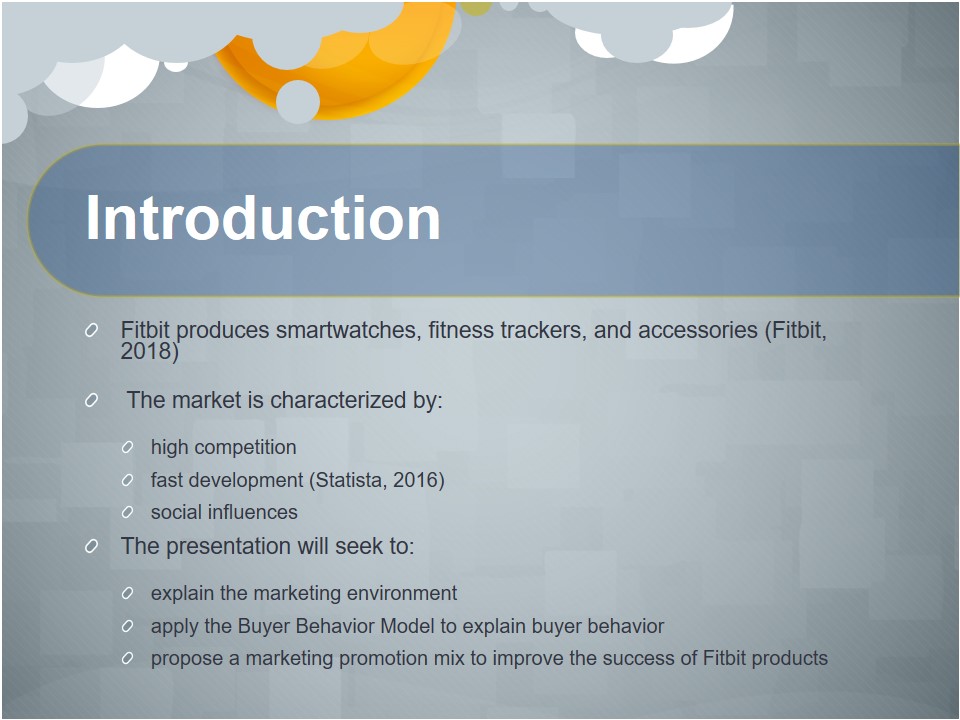
Marketing Environmental Factor 1: Competitive Landscape
- Main competitors include Garmin, Apple, Huawei, and Xiaomi.
- Expedited development of new products.
- Increased bargaining power of buyers.
- Competition influences pricing strategies (Chaudhuri, 2002).
- Fitbit should apply a successful branding strategy and develop competitive advantages.
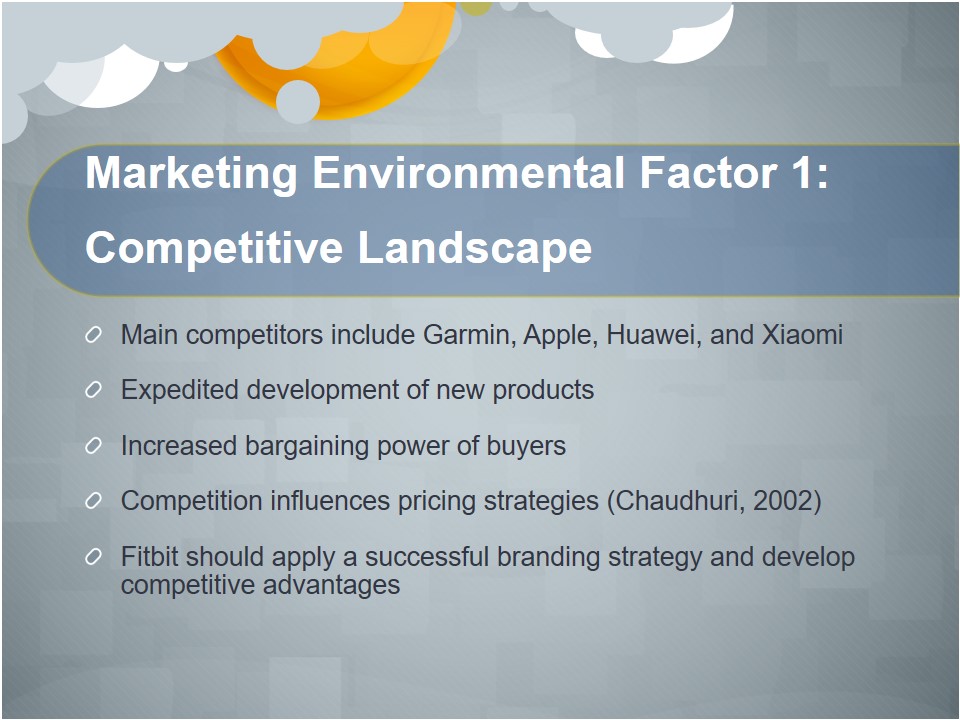
Marketing Environmental Factor 2: Social Media
- Social media affects the cultural environment.
- Impacts customer needs and expectations regarding product features.
- Creates new marketing opportunities for lifestyle and fitness products:
- Social media advertisement is highly effective in attracting new customers (Akhlagh, Akbari, & Kasani, 2016).
- Advertising with popular social media personas can foster brand awareness (Okazaki & Taylor, 2013).
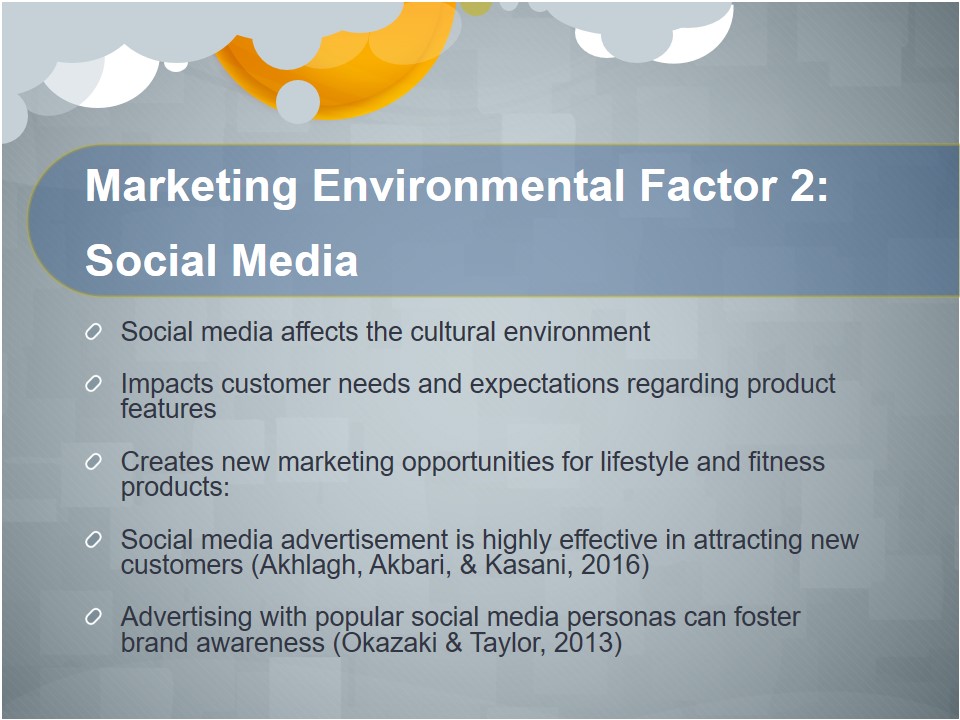
Marketing Environmental Factor 3: Health and Lifestyle
- Body image ideals are transmitted in the popular media.
- Changes to people’s health and fitness goals.
- Health and lifestyle products gained increased attention and popularity.
- People can also use health and fitness devices for enhancing their social image (Asimakopoulos, Asimakopoulos, & Spillers, 2017).
- Health and lifestyle trends create a positive marketing environment for Fitbit.
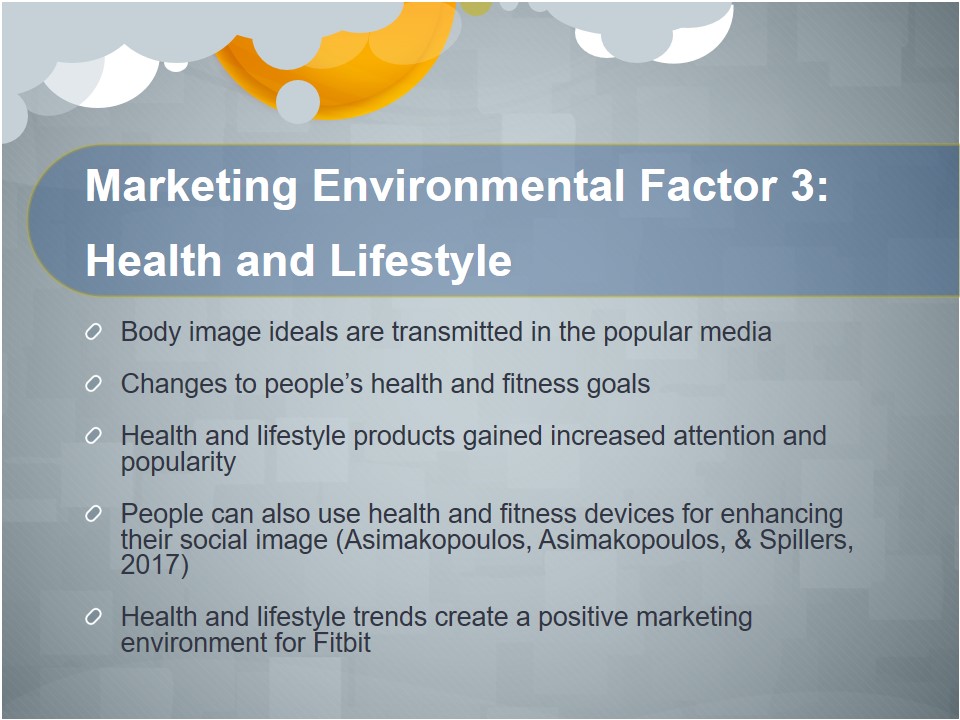
Buyer Behavior Model: Situational Influences
- Situational influences are market offerings, demographics, and the complexity of the buying task (Burnett, 2011).
- A lot of market offerings from competitors.
- Moderate complexity of the buying task.
- Fitbit is most popular among people aged 25-40, educated and with medium income.
- Target audience is likely to buy the product with minor hesitation.

Buyer Behavior Model: External Influences
- External influences include culture, social class, and reference groups.
- Cultural environment promotes fitness and health.
- Reference group is rather large and includes young people interested in health and fitness.
- Fitbit is aimed at the upper-middle class, which is shrinking (Schwartz, 2017).
- The company would benefit from a broad marketing campaign that would attract more people from the reference group.
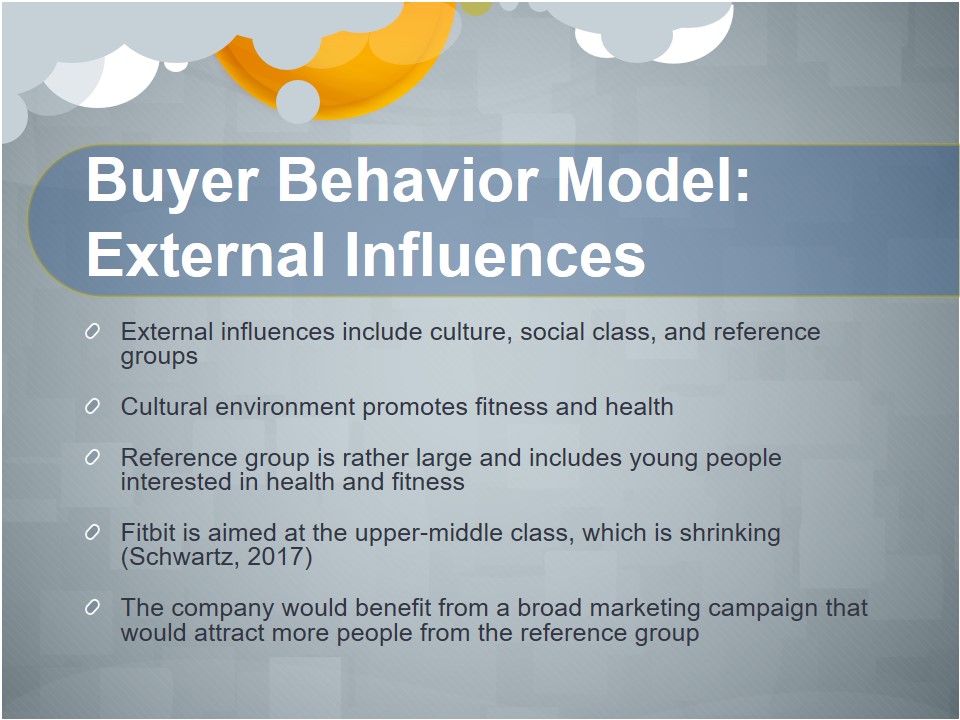
Buyer Behavior Model: Internal Influences and Processes
- Socialization leads people to lead healthy lifestyle and try to become more fit (Eadicicco, 2018).
- Lifestyle and motivation are also internal influences that positively impact purchase decisions.
- External, internal, and situational influence cause people to become interested in the product (Perner, n.d.b).
- A comprehensive marketing strategy could increase brand awareness, leading to purchase.
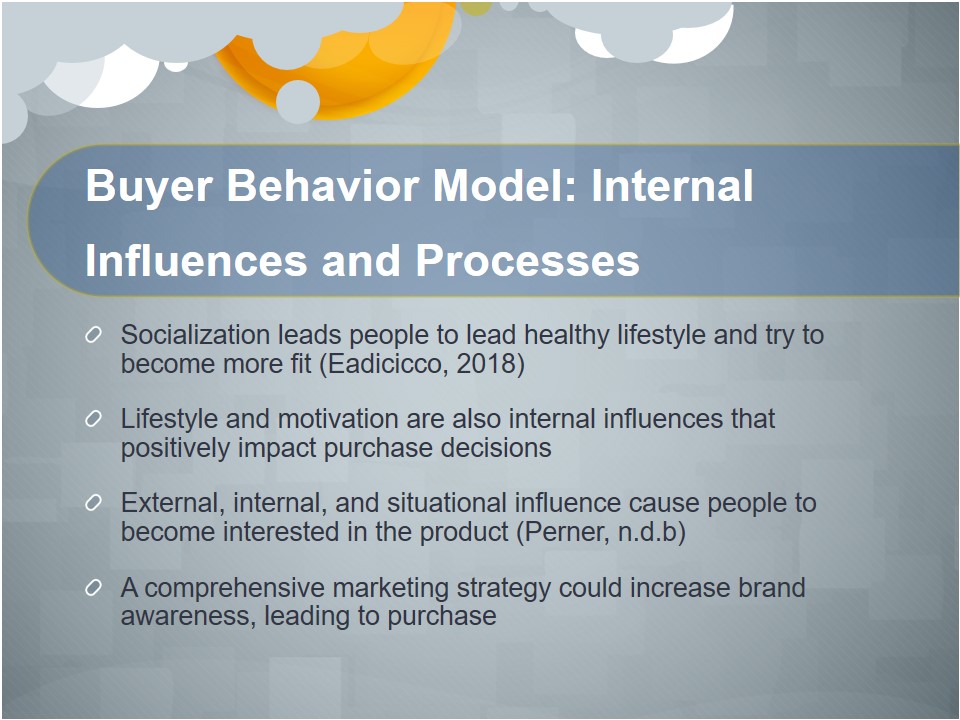
Communications Channel 1: Digital Marketing
- A promising communications channel for Fitbit.
- Social media are particularly popular among the target audience.
- Digital marketing can target people with specific interests, and is thus cost-effective (Hruska & Maresova, 2018).
- Difficult to choose a suitable platform (Klie, 2011).
- Digital marketing strategy could include SMI ads, direct online ads, and the use of corporate social media profiles (Roy, Datta, & Basu, 2017).
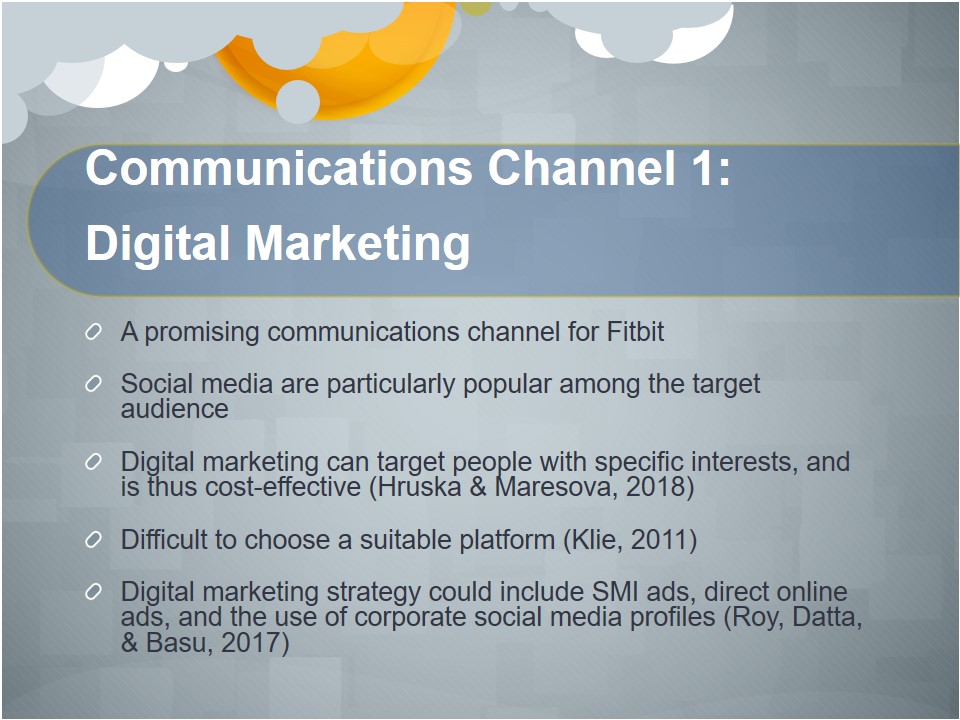
Communications Channel 2: Broadcast Advertising (TV, radio)
- Broadcast advertising is effective as it targets various audiences.
- Choosing a particular time of day or channel can make broadcast advertising more targeted (Sandberg, 1999).
- Negative aspects include high cost and lower cost-effectiveness.
- Viewers tend to switch channels to avoid advertisements (Sandberg, 1999).
- Placing short, visually appealing ads could be useful for Fitbit.
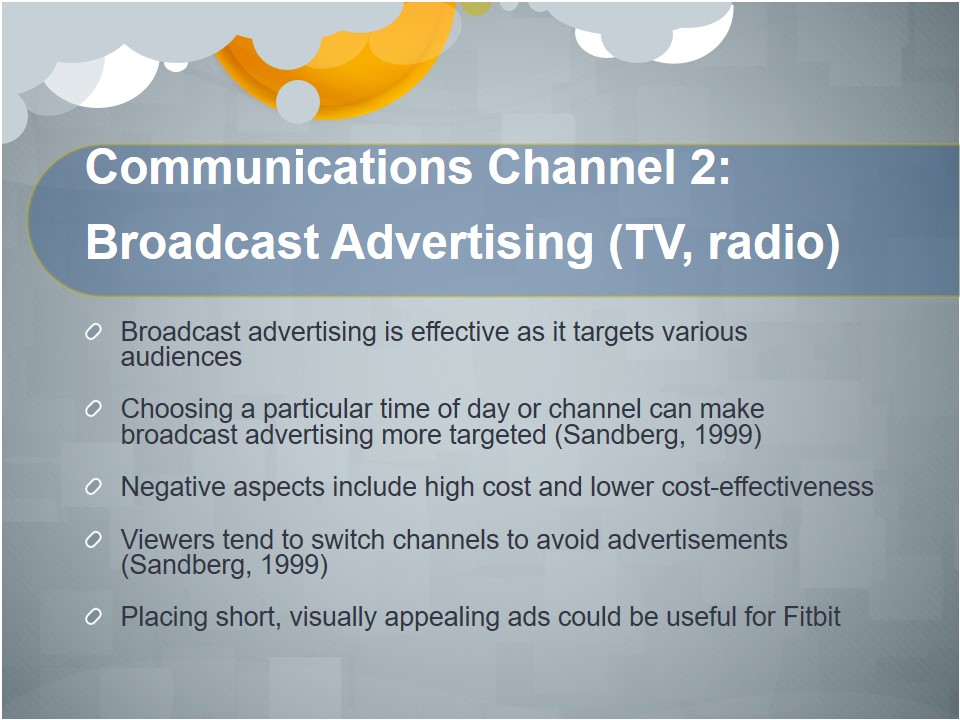
Communications Channel 3: Sales Promotion
- Sales promotions can predict purchase decisions and attract new customers (Genchev & Todorova, 2017).
- Appeal to existing customers thus increasing brand loyalty.
- Not all types of sales promotions are equally effective.
- Only a short-term strategy, no long-term effects.
- Fitbit could use discounts and promo codes to encourage customers to buy its products.
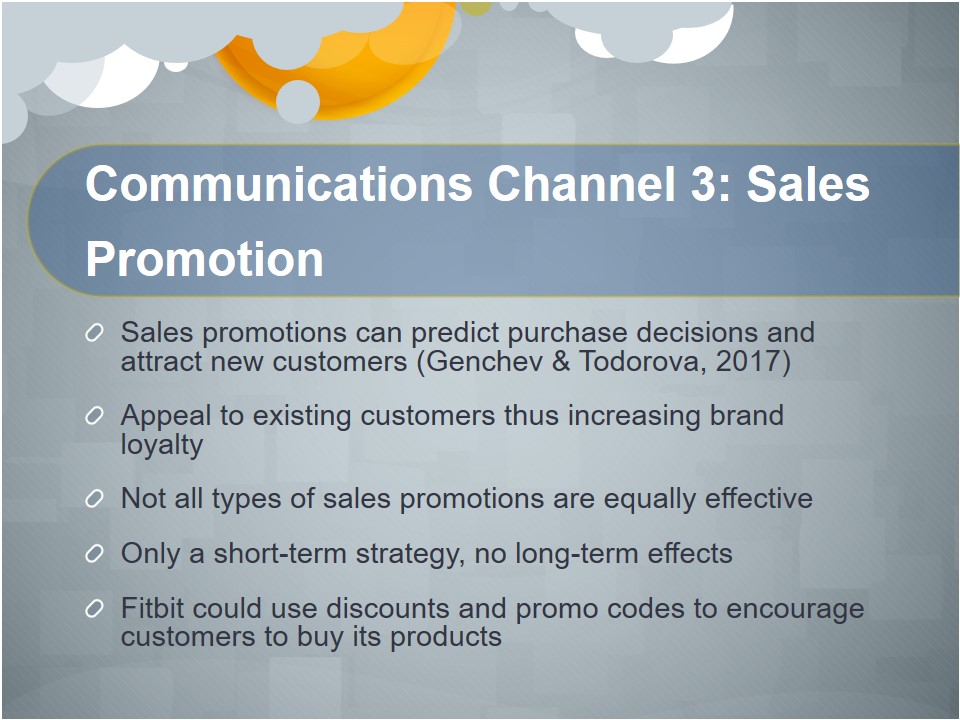
Traditional Media Ad 1: Broadcast Advertising (TV)
- Gaudet (2014) says TV ads should address distinctive product features.
- Tagline: “Your Life. Your Style. Your Move.”.
- No voice-over except for the tagline, upbeat music.
- Small clips of different people with different lifestyles using Fitbit products.
- Portrays versatility of products and appeals to most audiences.

Traditional Media Ad 2: Direct Mail
- Use direct mail to deliver promotional offers to existing customers (Perner, n.d.a).
- Tagline “Like Your Life with Fitbit?”, followed by a promo offer.
- Offer discounts for second purchase, friend referral promo code, etc.
- The back of the flyer could be used to promote new product releases.
- Flyers should feature images of people using Fitbit, a calm background, and a readable font.
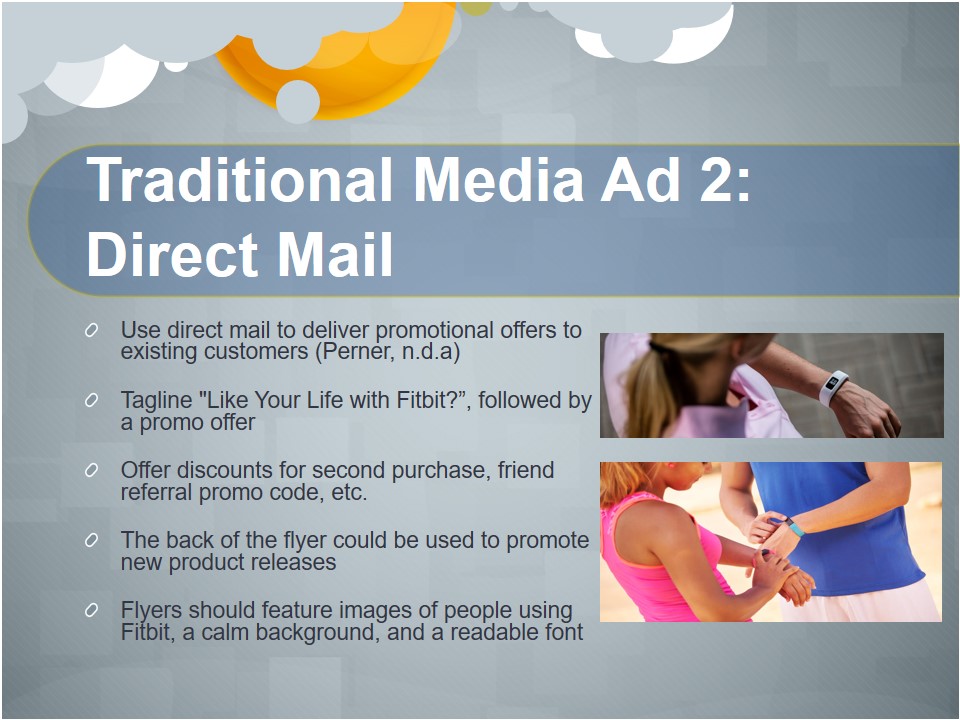
Electronic Media
- Fitbit should place advertisements with social media influencers (Khamis, Ang, & Welling, 2016).
- Fitness and lifestyle bloggers are popular among the target audience.
- Tagline: “Life Is Better with Fitbit”.
- A blogger could promote Fitbit in their own words.
- The picture and text should be chosen by the SMI to encourage trust.
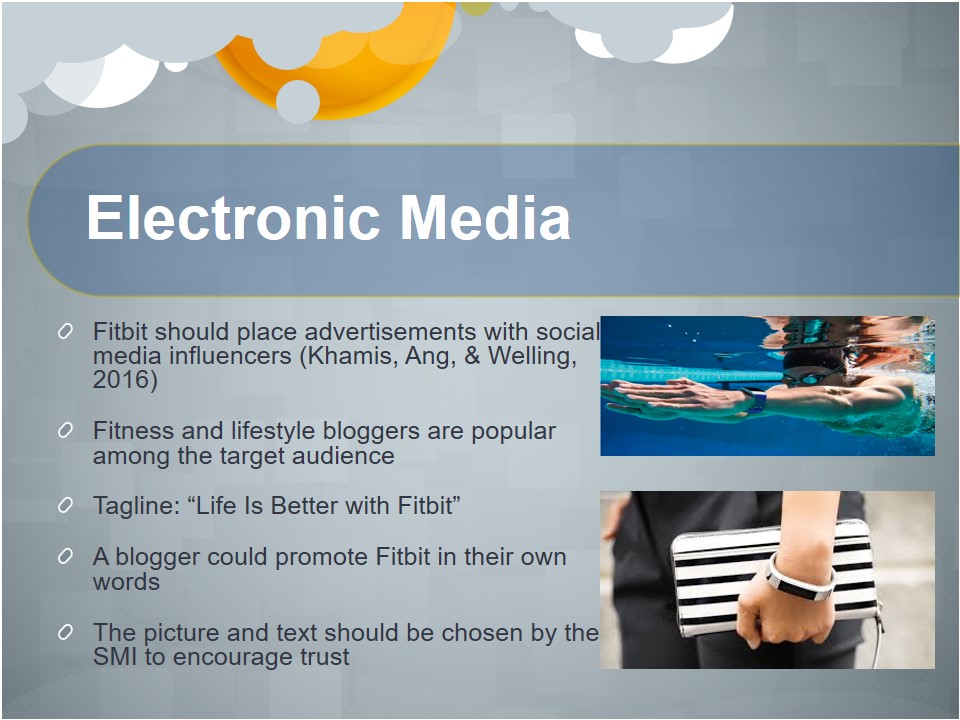
Conclusion
- Competition is the main threat to Fitbit’s success.
- Social and cultural influences create a favorable environment for marketing.
- Building brand awareness through advertising would attract more customers.
- Fitbit should use TV, social media, and direct mail ads.
- The proposed promotional mix would help the company to earn a larger market share.
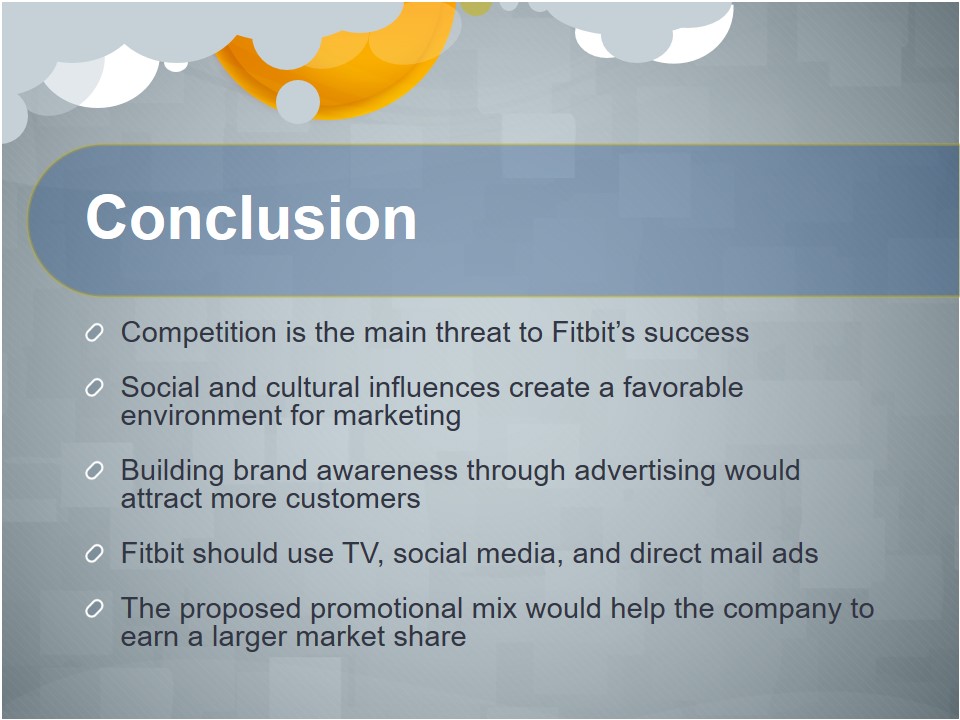
References
Akhlagh, E. M., Akbari, M., Kasani, H. M. (2016). Considering the Effect of Social Media Marketing on Effectiveness of Advertisement and Healthy Tourists Attraction. International Journal of Scientific Management & Development. Vol. 4 Issue 10, p. 387-394.
Asimakopoulos, G., Asimakopoulos, A., Spillers, F. (2017). Motivation and User Engagement in Fitness Tracking: Heuristics for Mobile Healthcare Wearables. Informatics.
Burnett, J. (2011) Introducing Marketing. Web.
Chaudhuri, A. (2002). How Brand Reputation Affects the Advertising-Brand Equity Link. Journal of Advertising Research. Vol. 42 Issue 3, p33-43.
Eadicicco, L. (2018). Fitbit Finally Made a Smartwatch I Can’t Wait to Wear. Time. p. 19-19.
Fitbit. (2018). Fitness Tracker of the Year. Web.
Gaudet, C. (2014). How to craft a powerful tagline for your business. Forbes. Web.
Genchev, E. & Todorova, G. (2017). Sales Promotion Activities – Effective Tool of Marketing Communication Mix. Trakia Journal of Sciences. Vol. 15 Issue Supp1, p1818-185.
Hruska, J. & Maresova, P. (2018). Consumer Power and Empowerment in the Context of Marketing on Social Networks. International Multidisciplinary Scientific Conference on Social Sciences & Arts SGEM. p127-132.
Khamis, S., Ang, L., & Welling, R. (2017). Self-Branding, ‘Micro-Celebrity’ and the Rise of Social Media Influencers. Celebrity Studies. Vol. 8 Issue 1, p191-208.
Klie, L. (2011). Peer Power. CRM Magazine. Vol. 15 Issue 6, p20-25.
Okazaki, S., & Taylor, C. R. (2013). Social Media and International Advertising: Theoretical Challenges and Future Directions. International Marketing Review. Vol. 30 Issue 1, p56-71.
Perner, L. (n.d.a). Channels of Distribution. Web.
Perner, L. (n.d.b). Consumer Behavior: The Psychology of Marketing. Web.
Roy, G., Datta, B., Basu, R. (2017). Trends and Future Directions in Online Marketing Research. Journal of Internet Commerce. Vol. 16 Issue 1.
Sandberg, J. (1999). The Greed for Speed. Newsweek. Vol. 133 Issue 5, p73.
Schwartz, N. D. (2017). Middle Class Contracted in U.S. over 2 Decades, Study Finds. The New York Times. Web.
Statista. (2016). Fitbit – Statistics and Facts. Web.